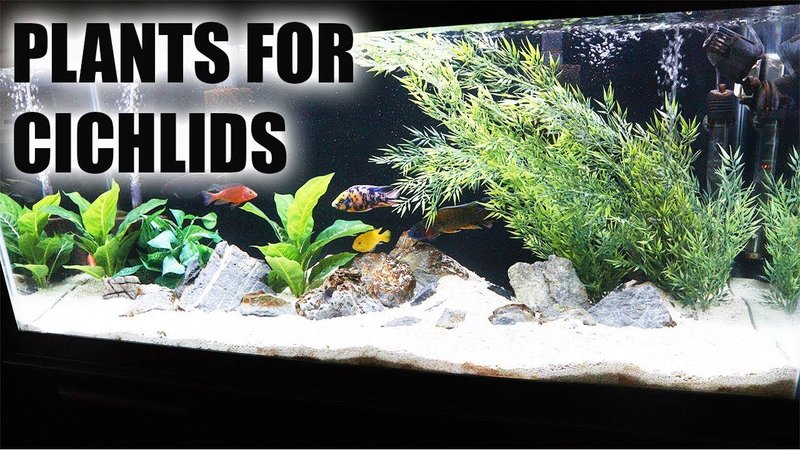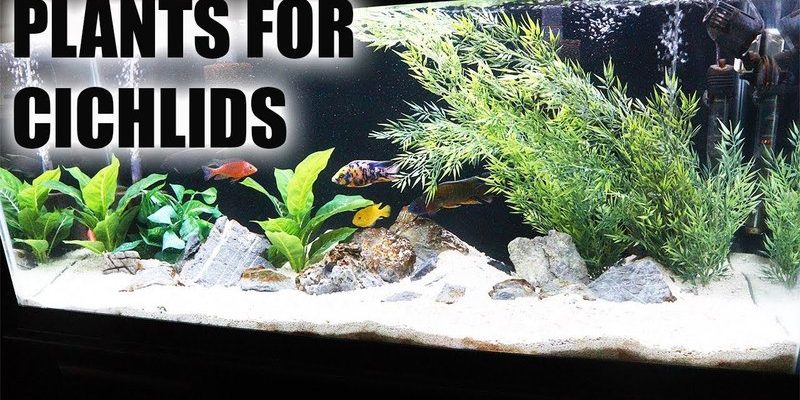
If you’re new to this, you might be asking yourself: “What plants should I choose? What kind of substrate is best?” You’re in the right place. We’ll dive into what makes cichlid tanks unique and how to select the perfect greenery and ground cover to create a nurturing and beautiful space for your fish.
Why Plants Matter in Cichlid Tanks
Adding plants to your cichlid tank isn’t just about aesthetics; it’s about creating a balanced ecosystem. Cichlids are known for their vibrant personalities and territorial behaviors, which can sometimes lead to stress if they don’t have hiding places or territories of their own. Plants provide shelter and enrichment, making them feel safe and secure.
Moreover, live plants play a crucial role in maintaining water quality. They absorb excess nutrients and carbon dioxide, which can prevent algae blooms that might otherwise harm your fish. Picture plants as the air purifiers of your tank; they keep it fresh and lively.
Lastly, plants can contribute to the overall beauty of your aquarium. A well-planted tank creates a natural environment that showcases your cichlids’ colors and behaviors. So, let’s explore the best options for both plants and substrate!
Best Plants for Cichlid Tanks
When choosing plants for cichlids, look for species that are hardy and can withstand some nibbling. Here are some top contenders:
- Anubias: This plant is tough and can thrive in low light. Its broad leaves are less likely to get damaged by cichlids.
- Java Fern: Another resilient option, Java Fern is a slow-grower that can attach to rocks or driftwood, making it less likely to be uprooted.
- Bogwood and Moss: While not a traditional plant, integrating moss onto bogwood can create a great hiding spot and looks appealing.
- Amazon Sword: This is a robust plant that offers plenty of surface area for fish to hide behind. Just ensure it has enough light to thrive.
Each of these plants has unique attributes that make them suitable for cichlid tanks. They’re durable, adaptable, and can survive in environments where cichlids are active. You might be wondering how to arrange them, and that’s where creativity comes in!
Choosing the Right Substrate for Cichlid Tanks
Now that we’ve covered plants, let’s talk about substrate. The substrate you choose can significantly impact both plant growth and the overall health of your tank. Cichlids often dig and rearrange their homes, so your substrate should be ideal for that behavior.
There are a few common types you might consider:
- Sand: Fine sand is often the best choice. It’s gentle on your cichlids’ delicate fins and allows them to dig and sift through it easily.
- Gravel: Coarse gravel can also work, but it’s vital to choose larger, rounded gravel to prevent any injuries.
- Specialized Substrates: Some brands offer substrates designed specifically for planted tanks, promoting healthier root growth and nutrient uptake.
The key is to balance aesthetics with functionality. You want a substrate that looks good but also supports your plants and allows your cichlids to express their natural behaviors.
Setting Up Your Cichlid Tank: Layering Plants and Substrate
Getting the layout right can be a fun part of creating your tank. Think of it like arranging furniture in your room. First, start with your substrate. If you’re using a special planted substrate, lay that down first.
Next, gently add your plants. Here’s a step-by-step way to arrange them:
1. Plant Placement: Start with larger plants like the Amazon Sword in the back or sides to create a natural backdrop. Add smaller plants like Anubias towards the front.
2. Secure the Roots: Make sure to bury the roots well but not too deep — you want them to breathe.
3. Add Decor: Integrate rocks or driftwood for hiding spots. Cichlids love to explore, and these will enhance the tank’s visual appeal.
Think about how the fish will interact with their environment. A well-planned setup not only looks great but also provides your cichlids with the comfort and security they need.
Maintaining Your Cichlid Tank
Once your plants and substrate are in place, maintaining your tank is crucial. Regular maintenance will ensure that both your plants and fish thrive. Here’s a quick guide:
– Water Changes: Change about 10-15% of the water weekly to keep it clean. This helps manage waste and nutrients.
– Pruning Plants: Trim dead leaves or overgrown sections of plants to keep everything looking neat and healthy.
– Monitor Parameters: Keep an eye on pH, ammonia, nitrite, and nitrate levels. Cichlids prefer slightly alkaline water, so ensure you’re within the right range.
It’s like caring for a garden; a little regular attention goes a long way in keeping your underwater paradise thriving.
Common Challenges and Solutions
Even with the best intentions, you might run into a few hiccups while setting up or maintaining your cichlid tank. Here are some common issues and how to tackle them:
– Plants Not Growing: If your plants aren’t thriving, check the lighting and substrate. Some plants require more light or specific nutrients.
– Cichlids Disturbing Plants: If they’re uprooting your plants, consider adding more secure decorations or rearranging the tank layout to minimize disturbance.
– Algae Growth: Overfeeding can cause algae blooms. Make sure you’re feeding your cichlids the right amount and consider adding algae-eating fish.
Every tank has its quirks, but with a little patience, you’ll learn how to create the perfect environment for your cichlids.
Final Thoughts on Plants and Substrate for Cichlid Tanks
Setting up a cichlid tank with the right plants and substrate is a rewarding experience. It’s about creating a home where your fish can flourish. By carefully selecting hardy plants and a suitable substrate, you’ll not only enhance their habitat but also enjoy the beauty and activity they bring to your space. Remember, it takes a little time to find the right balance, but it’s totally worth it.
Happy fishkeeping!

